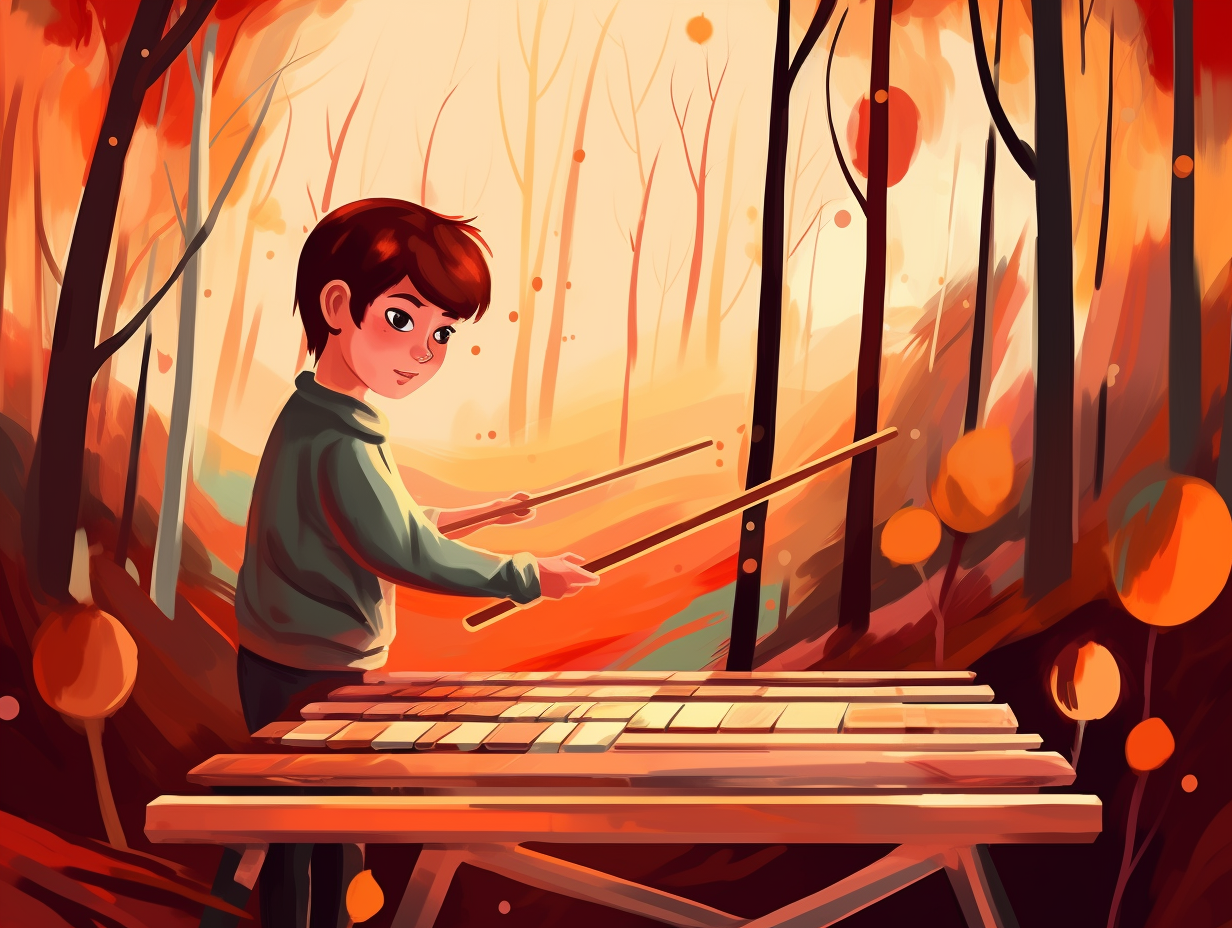Strike a Chord: Top 11 Unique and Engaging Fun Facts About Xylophones!

1. Material Matters: Wood vs. Metal vs. Plastic
Tickle those ivories in a different way: xylophones boast their diverse range of sizes and materials, from wooden, metal, to even plastic! The choice of material sways the musical outcome like listening to Mozart in the shower – with warm, rich tones resonating from wooden xylophones, and brighter, cut-glass sound from their metal and plastic counterparts. So from the budding prodigy to the seasoned virtuoso, you'll find the xylophone soulmate that plucks those perfect notes - and maybe even the funny bone!
Source => singersroom.com
2. Octave-Lower Conundrum
They say music is the key to one's soul, but what if the key is really a mallet and the soul is an orchestra of wooden bars? A xylophone conundrum, indeed: As a transposing instrument, the xylophone's parts are written an octave lower than the actual sounding notes, giving it a unique pitch range that distinguishes its lively timbre from other percussion instruments!
Source => en.wikipedia.org

Discover the fascinating origin of the piano's name, from its elaborate Italian beginnings as "clavicembalo col piano e forte" to the simpler and widely-known term we use today. Uncover how this 1700s invention by Bartolomeo Cristofori took the music world by storm with its unique ability to create soft and loud melodies! 🎹🎶
=> Fun Facts about The-Piano
3. Johnny Appleseed of Tunes
Before the xylophone became a beloved staple in elementary school music classes, it was busy spreading its melodic charm across Asia and Africa like a wooden sort of Johnny Appleseed (but for tunes, not trees): this whimsical instrument evolved from the harmonicon, which originated in East Asia around 2000 B.C., and evidence of a true xylophone emerged in Southeast Asia during the 9th century.
Source => coolpercussion.com
4. Beethoven's African Xylo-Playdate
If Beethoven and Mozart had a xylophone playdate, they'd have been headbanging to some truly radical African beats: The xylophone's influential role in African music can be traced back to 500 A.D., and its contagiously cool vibe spread across the globe, resulting in the development of the modern marimba in South America and its continued popularity in orchestras and educational settings today.
Source => coolpercussion.com

5. Xylophone's Epic Migration Story
Before xylophones were busy bringing zesty pizzazz to wildly popular party tunes, they were hopping continents in their epic origin story: Originating in Africa, the xylophone journeyed to South America and the Caribbean through the migration of slaves, later evolving into the marimba—a hulked up, higher-pitched sibling with more blades and varying timbres. Nowadays, xylophones and their afro-Caribbean cousins are stars of the urban music scene, stealing the spotlight in reggaeton and electrolatino jams with their unique harmonics and head-turning acoustic prowess.
Source => dakotapulse.com
6. Size Does Matter: Pitch Edition
Whoever said "size doesn't matter" clearly never played the xylophone: The pitch produced by this whimsical instrument is greatly influenced by the length and width of its wooden bars, showing that shorter and thinner bars create higher pitches while longer and thicker ones produce lower pitches!
Source => scienceleadership.org
7. Caffeinated Xylo-Cousin
If you've ever imagined the xylophone as the caffeinated cousin to the marimba or the sarcastic sibling to the glockenspiel, you're actually onto something: Unlike its mellow marimba mate and glockenspiel doppelganger, the xylophone sports a higher pitch, shorter sustain, and is designed for a quicker two-mallet performance, all thanks to its wooden or synthetic bars, and smaller resonator tubes.
Source => soundadventurer.com
8. Goldilocks & Mallet Choices
When mallets are like Goldilocks searching for the perfect porridge, xylophones hold the key to their fairy tale endings: The hardness of the mallet changes the xylophone's sound, with harder mallets making a brighter and louder tone, while soft ones like rubber or yarn create a warmer and more rounded tone, and wooden mallets offering a variety based on ball size.
Source => hub.yamaha.com
9. Real Wood Whacker
Step aside, lumberjacks, and let a real wood whacker make some noise: The xylophone, a member of the percussion family, is composed of wooden bars that create unique sounds when struck by mallets, often finding its place in orchestras and genres like jazz, classical, and folk music worldwide.
Source => etymonline.com

10. Tickle the Ancient Wooden Bones
Before the bad bones were tickled on Halloween, the xylo-player tickled the wooden bones of ancient tunes: Descending from ancient cultures in Africa and Asia, the xylophone is one of the world's oldest musical instruments, gaining traction in Western music during the 19th century and still rocking the jazz and world music scenes.
Source => pond5.com
11. Xylo-Diva's Mallet Wardrobe
If roses are red and violets are blue, then xylophones are divas with a wardrobe of mallets and bars as shoes: The pitch of a xylophone is determined by the length, width, and thickness of its bars, which are typically made of hardwood like rosewood or Japanese birch, and altering these dimensions can produce a distinct range of soul-lifting notes.
Source => vsl.info
Related Fun Facts




















